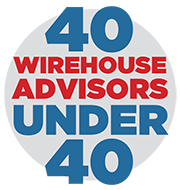In 2002, Keith Apton, then 24 years old, traveled down to Clute, Texas, to meet with the owner of a mid-sized business about the possibility of implementing an employee stock ownership plan (ESOP). The business owner’s wall was covered with deer heads and animal hides—except for one vacant spot. “‘You see that empty spot? That’s for you if you screw up my deal,’” Apton recalls the owner saying. “I laughed, but he didn’t.”
That was the first ESOP deal Apton completed, and “from there it was the domino effect. When I closed that ESOP, the CPA loved it, and that CPA started referring me people. The client referred me more people.”
An ESOP is a formal arrangement in which employees gain ownership in the company. The sale may be tax-free, and the company may be able to deduct the entire purchase price of the stock sold to the ESOP plus interest.
Apton’s knowledge of employee stock ownership plans is what gets him in the door; post-transaction, he brings in other members of his team specializing in financial planning, security selection and cash flow modeling and talks to the owner about their personal wealth management.
Apton got a taste for stock ownership plans in college when he interned at Science Applications International Corporation, or SAIC, an ESOP company. His SAIC connections helped him build up his book during his early days as an advisor. “In the first 12 months, prior to ever closing an ESOP deal, I was able to bring in maybe $15 to $20 million to stay alive, and a lot of that came from people that I had met at SAIC who believed in a young guy,” he remembers.
The stock ownership plans can take anywhere from six months to two years to implement. “It’s a very natural way to develop that rapport and have a reason to have a seat at the table with the client,” he says. “From the seller’s perspective, it’s a way to unlock value in your privately held business without paying any taxes, and maintain some level of control.”
Knowing the structure of the client’s business helps him build a more fitting financial plan. For example, when a business owner sells to an ESOP, their salary is usually reduced; Apton will structure their portfolio to make up for that lost income.
Ninety percent of Apton’s ESOP work is from referrals by accountants, investment bankers, tax and estate attorneys, or existing clients. Year-to-date through June, he’s brought in $110 million in net new money.
As for the Texas business owner? He too is now a client, and not a year goes by that Apton doesn’t get invited to his 26-acre ranch.


